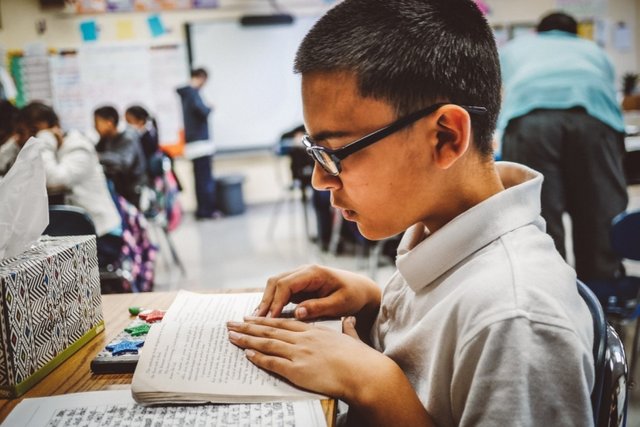Mentor Texts 101/Share This Story

Pen in hand, paper on the table in front of me. The words, “Dear Sir or Madam,” scrawled loosely across the top. And nothing else. I wracked my brain for the lessons learned almost a decade before in high school about formal letters or business letters, but I struggled to apply these lessons to what I had to do now. Eventually, frustrated and annoyed, I sat down to my computer to search, “how to write a cover letter.” Yes, I Googled it. Unsurprisingly, search results were plentiful. Articles abounded on what to do and what to avoid, but still I felt perplexed. A search for cover letter samples, however, turned out to be the key. How quickly I was able to pull my own together after that!
How often have you done this—searched the internet or asked a friend or colleague—when faced with drafting some new form of writing? Whether you’re writing a resume or a lesson plan, a thank you letter or a research paper, looking at samples of others’ work gives us a model to engage with while crafting our own unique material. Behold, the power of a mentor text.
Observe and Replicate

This type of learning is not unique to writing. Think of the athlete who watches other players to learn a new skill or watches a game film to learn a new play. Think of the actor who spends countless hours watching and mimicking a great play to improve his own skills. Think of the businesswoman who watches TED Talks and practices to improve her public speaking.
When we are asked to do or write something with which we are not familiar, we actively seek out models to emulate. We are using our own forms of mentor “texts”: the sample resume, the game film, the TED talks. These tools support us and help us grow our own skills. We needn’t rely on them forever.
Mentor Texts in the Classroom

Mentor texts fill this essential role within our classrooms for every age. Should a mentor text be something you read to the students once and then expect them to reproduce its wonder? Absolutely not. It is not something merely given to the students. Mentor texts should be well-loved, oft-referenced guides in the classroom. A powerful mentor text can—and should—be revisited time and time again to model strategies and to allow students to interact closely with the text. A strong teacher shows their students what to look for in the model and why it is a great example for their learning. The teacher guides them and supports them, while referring back to the text, as they experiment using their own words. Over time, your learners will draw less on the text support and more on their own skills, turning from fledgling attempts to masterful creations.
What Makes a Mentor Text

The magic of a strong mentor text is not in the text. It is the teacher’s passion and energy, the ownership of instruction that comes from the teacher’s choice. Whenever possible, you should you use mentor texts that speak to you, that you love, that you radiate enthusiasm for. Perhaps you’ve always loved Where the Wild Things Are, or maybe you’re more motivated by Steve Jenkins and Robin Page’s What Would You Do With A Tail Like This? These are the books you should be using with your students because your emotions are contagious; your passion becomes their passion. Let them learn from the vivid verbs in Kevin Henke’s Wemberly Worried, and the character development in Gary Paulsen’s Hatchet or Harper Lee’s classic To Kill a Mockingbird.
There are lists galore with mentor texts to teach different skills or themes, but the truth is that almost any book can be a mentor text. What matters is how you engage your students with the text, preparing them to one day select and evaluate their own books to inspire and guide their growing craft. Maybe you already have your favorites, or maybe you’re looking for something new. Here are some books we love!